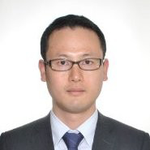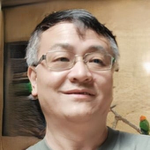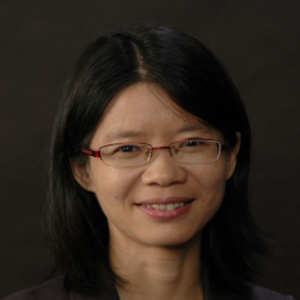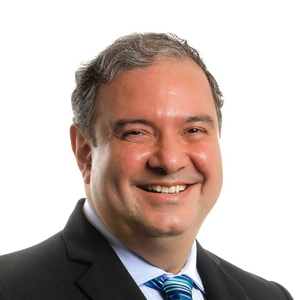This is a past event. Registration is closed. View other Agency for Science, Technology and Research (A*STAR) events.
Save the date
Save the dateSeptember 16, 202413:15 - 16:35 GMT+8 Add to Calendar
Venue Location
Organizer
Organizer
Phone: +65 65177922
Contact Person: Dylan Lim
Event Details
Event Details
SG MEM is excited to announce a collaborative event with the Pharma Innovation Programme Singapore (PIPS) titled "Waste Management for Pharmaceutical Industries." The workshop is scheduled to take place on 16 September, from 1:15 PM to 4:30 PM, at CREATE Tower, NUS.
This event aims to foster innovation and collaboration between the pharmaceutical and membrane R&D sectors. The workshop will focus on several key problem statements identified by PIPS Core Members, including Pfizer, GSK, and Syngenta, who will be present at the event.
Agenda
Agenda
13:15 - 13:30
Registration
Registration
13:30 - 13:40
Welcome Address – PIPS
Welcome Address – PIPS
13:40 - 13:55
Welcome Address - SG MEM & START
Welcome Address - SG MEM & START
13:55 - 14:00
Pharmaceutical Waste Resource Recovery
Pharmaceutical Waste Resource Recovery
Pharmaceutical wastes including solvents, proteins etc., are difficult to be eliminated from water systems using conventional wastewater, therefore novel solutions such as modular waste treatment systems are to be sought. This poster will provide an insight into prospective pharmaceutical waste resource recovery.14:00 - 14:20
Pharmaceutical API manufacturing ambition to Carbon Net Zero
Pharmaceutical API manufacturing ambition to Carbon Net Zero
GSK will be sharing the current way waste is being handled and the challenges in reducing the waste or to recycle the waste, as well as an overview of the typical facility of a pharma API manufacturing facility and the waste it generates. He will also be presenting the reason why waste reduction and circularity is important to drive towards the Carbon Net Zero ambition.14:20 - 14:45
Membrane development and application for pharma wastewater treatment
Membrane development and application for pharma wastewater treatment
Active pharmaceutical ingredients (API) are harmful in the environment at concentrations as low as 0.1 ug/L. Currently, incineration is typically applied to remove hazardous components from pharmaceutical wastewater stream, which is cost prohibitive. Membranes offer a cost-effective approach to concentrate the pharmaceutical stream, hence reducing the volume of wastewater sent for incineration or any other processes for degradation of APIs.
In this talk, she will present their recent ...Active pharmaceutical ingredients (API) are harmful in the environment at concentrations as low as 0.1 ug/L. Currently, incineration is typically applied to remove hazardous components from pharmaceutical wastewater stream, which is cost prohibitive. Membranes offer a cost-effective approach to concentrate the pharmaceutical stream, hence reducing the volume of wastewater sent for incineration or any other processes for degradation of APIs.view more
In this talk, she will present their recent efforts in developing membranes for concentrating antibiotics in pharmaceutical wastewater, reducing the volume of waste for downstream processing by up to 95%, thus greatly improving the energy efficiency. Different membranes, such as membrane distillation, nanofiltration and solar evaporation will be covered.14:45 - 15:10
Protein purification via membrane crystallization
Protein purification via membrane crystallization
Therapeutic proteins are high value compounds that rely on the use of chromatography for purification purposes. This talk presents membrane crystallization as a more scalable and sustainable technology for protein purification purposes.15:10 - 15:40
Networking & Tea Break
Networking & Tea Break
15:40 - 15:55
Advancing the Circular Economy through Solvent Recovery in Pharmaceutical Processes
Advancing the Circular Economy through Solvent Recovery in Pharmaceutical Processes
SepPure Technologies will be sharing how GreenMem® nanofiltration membranes play a role in pharmaceutical applications. The presentation will cover the features of GreenMem® technology and how they are integral to the effectiveness of the RE(SOLV)® solution for solvent recovery. The presentation will also explore practical use cases, highlighting how the membrane technology platform and the solution contributes to efficiency, sustainability, and innovation in the industry.15:55 - 16:10
Revolutionizing Pharmaceutical Waste Management with Advanced Separation Technologies
Revolutionizing Pharmaceutical Waste Management with Advanced Separation Technologies
Memsift Innovations is revolutionizing the treatment of pharmaceutical industrial liquid waste through the deployment of advanced separation technologies. By leveraging improved membrane distillation, the company ensures efficient and cost-effective separation processes. Their chemical-resistant ultrafiltration and nanofiltration technologies further enhance the treatment capabilities, providing robust solutions that withstand harsh chemical environments. Additionally, Memsift's integration of e...Memsift Innovations is revolutionizing the treatment of pharmaceutical industrial liquid waste through the deployment of advanced separation technologies. By leveraging improved membrane distillation, the company ensures efficient and cost-effective separation processes. Their chemical-resistant ultrafiltration and nanofiltration technologies further enhance the treatment capabilities, providing robust solutions that withstand harsh chemical environments. Additionally, Memsift's integration of electro-chemical oxidation offers superior contaminant degradation and resource recovery. Together, these technologies create a comprehensive approach to closing the pharmaceutical waste loop, enabling sustainable and environmentally friendly operations for the pharmaceutical industry.view more16:10 - 16:25
Wastewater Treatment & Protein Separation in the Membrane Industry
Wastewater Treatment & Protein Separation in the Membrane Industry
Two broad topics will be introduced: Using biological and membrane technologies to treat highly concentrated wastewater produced from the pharmaceutical industry, as well as protein clarification, separation and purification used in the manufacturing industries.16:25 - 16:40
A Robust and Reliable Solution for Treatment of Pharmaceutical Wastewater
A Robust and Reliable Solution for Treatment of Pharmaceutical Wastewater
A case study of using “A-A-O MBR” for treatment of challenging organic wastewater will be presented. The wastewater contains high concentration organic solvent Dimethylacetamide (DMAc) of approximately 28% and other nasty pollutants. The MBR plant is comprised of anaerobic, anoxic and aerobic biological reactors and submerged ultrafiltration unit. The system removes about 95% of the TOC and nitrogen. The treated effluent is recycled back to the manufacturing process without discharge to the sewe...A case study of using “A-A-O MBR” for treatment of challenging organic wastewater will be presented. The wastewater contains high concentration organic solvent Dimethylacetamide (DMAc) of approximately 28% and other nasty pollutants. The MBR plant is comprised of anaerobic, anoxic and aerobic biological reactors and submerged ultrafiltration unit. The system removes about 95% of the TOC and nitrogen. The treated effluent is recycled back to the manufacturing process without discharge to the sewer. The membrane made by NTi has been performing well with permeability maintaining persistently above 150 LMH/bar at flux rate of 12.5 LMH.view more16:40 - 16:45
Closing
Speakers
Speakers
Exhibitors
Exhibitors
If you input more than 0 characters your Search exhibitors may not display properly
Community
Community XLZYWWKCLLWA
XLZYWWKCLLWA
Connect with 84 people attending this event
 XLZYWWKCLLWA
XLZYWWKCLLWATickets
Tickets
Access to Waste Management for Pharmaceutical Industry Event
Complimentary























